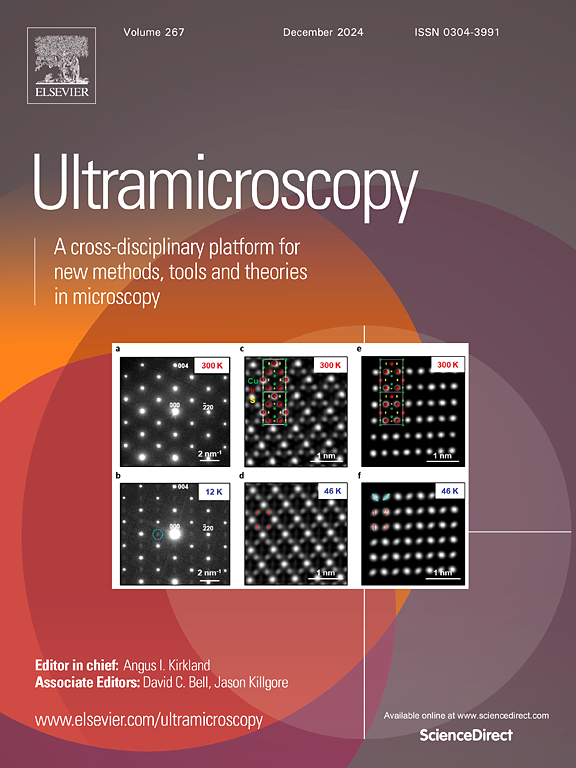用于像差校正的发射率最小化 I:在不知道像差系数的情况下校正电子显微镜的像差
IF 2
3区 工程技术
Q2 MICROSCOPY
引用次数: 0
摘要
电子束的精确对准是扫描透射电子显微镜(STEM)在原子水平上理解材料的成功应用的关键。尽管像差校正器取得了成功,但像差校正仍然是一个复杂的过程。本文从加速器物理的角度探讨了像差校正问题,并指出它相当于最小化光束的发射度增长,即探头相空间分布的跨度。我们训练了一个深度学习模型,从实验可获得的Ronchigrams中预测发射率的增长。仿真和实验结果表明,该模型能较准确地捕捉到发射度随像差系数的变化。我们进一步证明了该模型可以作为透镜参数全局优化的快速执行函数。我们的方法提供了新的方法来快速量化和自动化像差校正,利用高速电子相机的快速测量。在本文的第二部分中,我们演示了发射度度量如何使用贝叶斯优化实现像差校正器的快速在线调谐。本文章由计算机程序翻译,如有差异,请以英文原文为准。
Emittance minimization for aberration correction I: Aberration correction of an electron microscope without knowing the aberration coefficients
Precise alignment of the electron beam is critical for successful application of scanning transmission electron microscopes (STEM) to understanding materials at atomic level. Despite the success of aberration correctors, aberration correction is still a complex process. Here we approach aberration correction from the perspective of accelerator physics and show it is equivalent to minimizing the emittance growth of the beam, the span of the phase space distribution of the probe. We train a deep learning model to predict emittance growth from experimentally accessible Ronchigrams. Both simulation and experimental results show the model can capture the emittance variation with aberration coefficients accurately. We further demonstrate the model can act as a fast-executing function for the global optimization of the lens parameters. Our approach enables new ways to quickly quantify and automate aberration correction that takes advantage of the rapid measurements possible with high-speed electron cameras. In part II of the paper, we demonstrate how the emittance metric enables rapid online tuning of the aberration corrector using Bayesian optimization.
求助全文
通过发布文献求助,成功后即可免费获取论文全文。
去求助
来源期刊

Ultramicroscopy
工程技术-显微镜技术
CiteScore
4.60
自引率
13.60%
发文量
117
审稿时长
5.3 months
期刊介绍:
Ultramicroscopy is an established journal that provides a forum for the publication of original research papers, invited reviews and rapid communications. The scope of Ultramicroscopy is to describe advances in instrumentation, methods and theory related to all modes of microscopical imaging, diffraction and spectroscopy in the life and physical sciences.
 求助内容:
求助内容: 应助结果提醒方式:
应助结果提醒方式:


